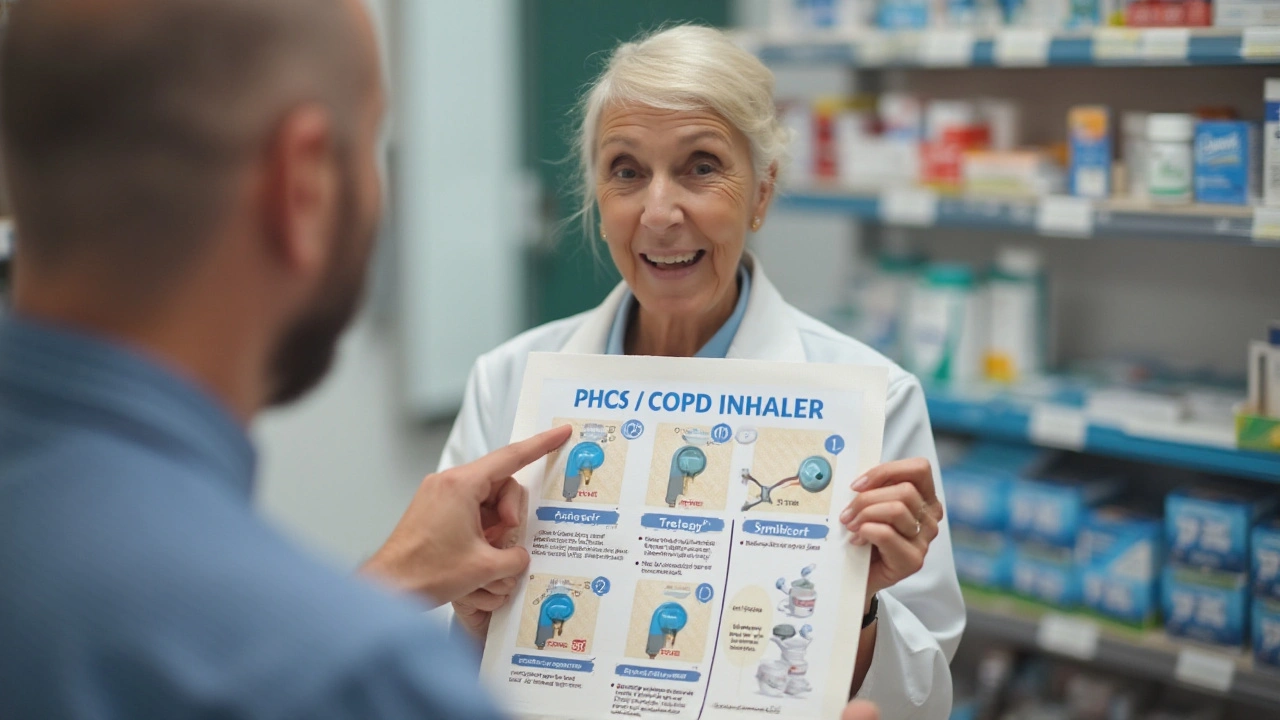Symbicort alternatives: what to try instead
Symbicort (budesonide/formoterol) helps many people control asthma and COPD, but it isn’t the only effective choice. If you’ve had side effects, trouble affording it, or want a different device or dosing schedule, there are clear alternatives that can work just as well when chosen correctly.
Common prescription alternatives
If you want another inhaled steroid plus long-acting beta agonist (ICS/LABA), doctors often prescribe options like:
- Advair (fluticasone/salmeterol): a widely used combo that many patients respond to. It tends to be effective for both asthma and COPD.
- Dulera (mometasone/formoterol): another ICS/LABA pairing with similar effects to Symbicort but different steroid and device feel.
- Breo Ellipta (fluticasone/vilanterol): usually once-daily dosing, which some people prefer over twice-daily inhalers.
For COPD specifically, inhalers that mix a long-acting muscarinic antagonist (LAMA) with a LABA — such as Stiolto (tiotropium/olodaterol) or Anoro (umeclidinium/vilanterol) — are commonly used instead of ICS/LABA combos. These can reduce flare-ups and sometimes work better for people whose main issue is COPD rather than allergic asthma.
Other paths: biologics, rescue meds, and practical tips
For severe asthma not controlled by inhalers, biologic injections like omalizumab, mepolizumab, benralizumab, or dupilumab target specific immune pathways and can cut exacerbations dramatically. These need specialist referral and tests (blood eosinophils, allergy tests).
Don’t forget rescue inhalers: albuterol (salbutamol) remains the short-acting bronchodilator you should carry for sudden symptoms. Oral steroids are a short-term fix for bad flare-ups but not a long-term replacement.
How do you pick? Start with these steps: 1) Talk with your doctor about symptoms, side effects, and costs. 2) Consider device type—metered-dose vs dry-powder—and how easy it is for you to use. 3) Ask about dosing frequency; once-daily can improve adherence. 4) Check insurance coverage and generic options to lower costs. 5) If switching, ask for a follow-up plan and objective checks like peak flow or symptom diary.
Quick tips that actually help: practice inhaler technique in the clinic, rinse your mouth after steroid inhalers to lower thrush risk, never stop a controller inhaler suddenly without advice, and carry your rescue inhaler at all times. If you’re thinking biologics, get a specialist consult and baseline blood work first.
Changing inhalers is common and usually straightforward when you work with your clinician. If Symbicort isn’t fitting your life or your lungs, there are smart, safe alternatives—so bring a list of your goals and concerns to your next visit and get a plan that suits you.

